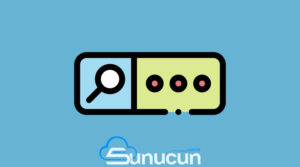What is a URL? What Can You Do with a URL?
Every resource on the internet, from web pages to files, is identified by a specific address. These addresses are known as URLs. So, what is a URL and what does it do? In this article, you will find detailed information about the structure, usage, and role of URLs in the world of the internet.
What is a URL?
URL stands for “Uniform Resource Locator.” It refers to the address assigned to each resource on the internet, such as web pages, files, or other resources. The URL format provides access to these resources through web browsers.
A URL typically consists of three main components:
- Protocol: This forms the beginning of the URL and can be “http://” or “https://”. The protocol indicates how the browser communicates with the web server. “HTTP” (Hypertext Transfer Protocol) and “HTTPS” (HTTP Secure) protocols ensure the secure transmission of web pages.
- Domain: This specifies the address of the website and can be something like “www.example.com”. The domain is the primary address that directs you to a specific website. This part is converted to IP addresses through DNS (Domain Name System) and provides your browser with the information needed to load the web page.
- Path: This follows the domain and identifies a specific page or resource. For example, “/about” or “/contact-us”. The path is dynamically determined based on the structure of the website and allows users to access specific content directly.
An example URL might look like: https://www.example.com/about. Here, “https://” is the protocol, “www.example.com” is the domain, and “/about” is the path. URLs enable users to quickly and easily access various resources on the internet.

How Does a URL Work?
When you visit a URL, your browser takes this URL and sends a request to the relevant web server. The web server receives this request, locates the relevant resource (e.g., a web page), and sends it back to your browser. Your browser receives this data and displays the web page on your screen. This process demonstrates how a URL helps find and retrieve resources on the internet.
During this process, the communication between the browser and server typically involves several steps. First, a DNS query is made to determine the IP address of the domain. Next, the browser sends a request to this IP address. The server receives this request, generates the requested content, and finally, sends it back to the browser for display to the user.
Uses of URLs
URLs play a critical role in many aspects of the internet and have various usage scenarios:
1. Accessing Web Pages
URLs provide direct access to web pages. When users want to visit a website, they can quickly open the page by entering the URL into their browser. This is the fundamental way to easily find and access information on the internet. Each URL directs to a specific resource on the web, allowing users quick and direct access to information.
2. Digital Marketing and SEO
URLs are crucial for digital marketing and SEO (Search Engine Optimization) strategies. In SEO practices, having a clear and keyword-optimized URL structure can help achieve higher rankings in search engines. For instance, short and descriptive URLs are better evaluated by search engines and make it easier for users to find the information they are looking for.
3. Social Media and Sharing
On social media platforms, URLs are used for sharing content. Users can share interesting articles, videos, or other content through URLs on their social media accounts, reaching wider audiences. This helps content go viral and reach more people. Short and concise URLs enhance shareability.
4. E-Commerce and Product Catalogs
On e-commerce sites, URLs are used to access product pages. Each product has a unique URL, which facilitates finding and purchasing the product. Additionally, URLs allow users to directly access specific products and improve the shopping experience. Well-organized and user-friendly URLs enhance the shopping experience for customers.
5. Content Management and Analytics
URLs also play an important role in content management systems (CMS) and web analytics. Content managers can analyze URLs to determine which pages receive more traffic and what content users are interested in. This information helps optimize content strategies and improve user experience.
Advantages and Disadvantages of URLs
Advantages
- Easy Access: URLs provide quick and direct access to any resource on the internet. This makes it easy for users to quickly reach information.
- SEO Optimization: Well-structured URLs are better evaluated by search engines and can help improve rankings. URLs containing keywords may rank higher in search results.
- Sharing and Promotion: URLs facilitate sharing content on social media and other platforms, allowing content to reach wider audiences. Short and concise URLs increase shareability.
Disadvantages
- Security Risks: Malicious URLs can be used for phishing and other cyber attacks. Users should be cautious with URLs and prefer links from trusted sources.
- Long and Complex URLs: Long or complex URLs can be difficult for both users and search engines to understand. Such URLs can negatively impact user experience and lower search engine rankings.
- Management Challenges: Managing and organizing URLs can be time-consuming. Especially for large websites, URL structures need to be regularly reviewed and maintained.
Conclusion
URLs are fundamental building blocks of the internet and play a significant role in accessing resources, SEO optimization, and digital marketing strategies. Properly structured URLs can positively impact both user experience and search engine rankings. For a safe and effective internet experience, it is essential to use and manage URLs correctly. Using URLs wisely will facilitate access to resources on the internet and optimize your web experience.




